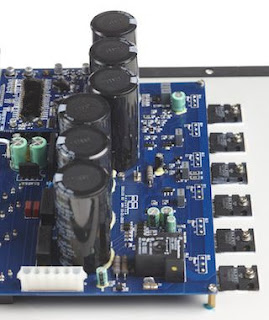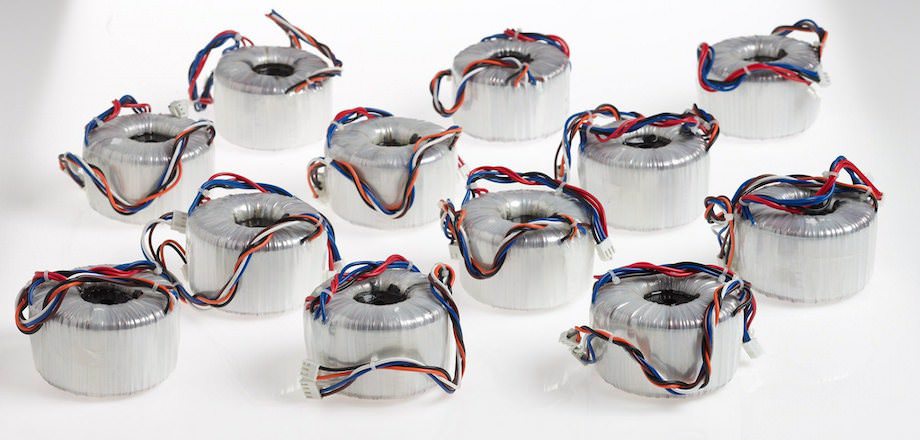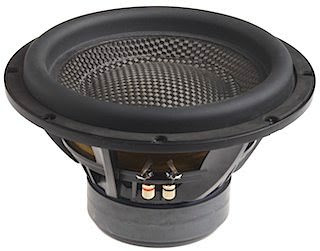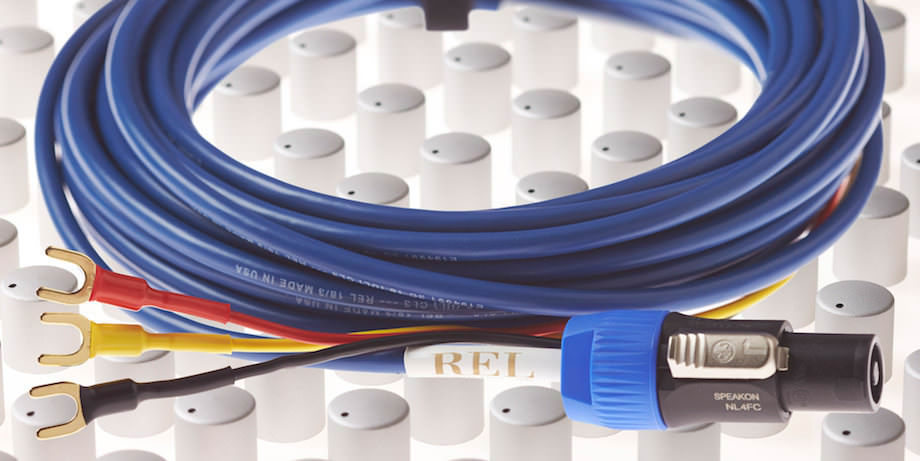Rel Subwoofer
Companies that specialize in a narrow segment tend to produce much better quality products than those that produce different types of devices. And this is logical - concentrating on one thing allows you to polish technologies to perfection and introduce unique developments. All this can be attributed to REL, a well-known manufacturer of subwoofers. And only subwoofers.
Rel
A subwoofer in a home theater today is more than just another channel. The sub is responsible for ensuring that low frequencies are sufficient even for those who like “chest hits”. A good sub makes the music richer and fuller. This is exactly what REL has succeeded in - it specializes exclusively in the production of subwoofers in different price ranges, different in appearance, and installation features. The main thing is that they are of high quality in all aspects.
Not for “to be”
The story of the REL company is similar to many others: once upon a time there lived a talented man on Earth who did not like the situation on the market, and he decided to change it. In our case, this man's name was Richard Edmund Lord, and he did not like existing subwoofers and low-frequency solutions in multi-band acoustics. He made his fateful decision to change the world in 1990.
Richard was categorically not satisfied with the speakers that existed then, 25 years ago, on the market. He did not hear normal low frequencies in any acoustics: large speakers rumbled, and small ones simply squeaked. Subwoofers were nothing more than consumer goods for Richard, which were installed at home for “just what it was.”
Richard didn't like anything that was on sale at the time: he believed that low frequencies not only deserved their own separate cabinets in every sense but deserved to be the best.
That's when he decided to create subs. He, without wasting any extra time, named the company REL (an abbreviation from the first letters of his own name - Richard Edmund Lord), coined the term “sub-bass system” and began, rolling up his sleeves, to conquer audiophiles.
Audiophiles fell for the newcomer almost immediately - with the release of the REL Stadium model, a new chapter in the history of subwoofers was opened. Stadium was designed with Richard's guiding principle in mind: subs should fit into any system as naturally as possible and reproduce low frequencies as cleanly and clearly as possible.
The subwoofer should be physically present, but absent auditorily; a person should not hear that the subwoofer is playing right now. The system just needs to have good musical bass.
 |
The first solution is that the woofer is connected to the bass amplifier with separate cables. Secondly, the subwoofer, according to Richard’s plan, becomes active and has its own independent, tunable crossover. In this case, the latter is completely separated from the system. An active circuit with a high input impedance was also invented, thanks to which the subwoofer was connected directly to the output terminals of the amplifier. After passing through the circuit, the signal enters the input of a power amplifier (with low output and high input impedance) using field-effect transistors, the parameters of which are optimized for operation with a low-frequency driver. By the way, all pass-through capacitors were excluded from this circuit.
Audiophiles appreciated all this and rushed to buy new products even more furiously, and in 1995 the company moved to the city of Bridgend in south Wales, simultaneously expanding the line in different price ranges. And the fact that REL produces only subwoofers gives the company an excellent chance to be head and shoulders above its competitors.
New Era
In 2005, a new era for REL began with the acquisition of the company by John Hunter and Donald Brody. The new owners decided to “modernize” the company’s approach to product production. First, the current product lines have been updated externally to ensure the subs not only sound great but look great, too. Secondly, we improved the electronics by replacing several components with better ones and “redrawing” some circuits. However, the basic principles are still practiced today. And reliability, innovation, and modern design allow us to maintain leadership in the segment.
Finished products are tested under the highest possible overload conditions, while the circuit boards themselves are manufactured to extremely strict standards to ensure the maximum degree of protection. Even cabinet joints are checked manually under bright light - they should not be visible, and the cabinets must be made extremely rigid so that no resonance spoils the sound quality. In addition, the cabinets use special tongue-and-groove joints combined with additional brackets that tighten the body to the maximum.
Richard Lord is no longer the director and chief designer of REL, but the company still produces high-quality low-frequency acoustics. He recently took a look at the new range of subwoofers for stereo and multi-channel systems and was very appreciative of what he called the "fantastic" job the new owners have done. Richard is still in close contact with the new owners and keeps his finger on the pulse.
Low-frequency catalog
Today, REL products are represented by several lines of subwoofers. These are the S and T series, the Gibraltar series (aka G series), the Habitat wireless subwoofer, and accessories. All of the company's subwoofers need to be calibrated during installation so that the bass fills the entire space, organically “merging” into the music, and does not come out only from one point. In addition, it is important to understand that these subwoofers are suitable not only for listening to music (including rhythmic music), but also for watching movies.
Finally, about connectivity. REL always recommends using a high-level connection for its subwoofers (directly to the amplifier's speaker terminals). For this purpose, a corresponding cable is included with the subwoofer, but you can also purchase an improved version of it separately.
It should also be said that all models are equipped with a tunable crossover (with sixteen frequency values from 30 to 120 Hz), a phase switch, level controls, terminals for connecting a pre-amplifier output, and outputs for connecting satellites with a low-pass filter. And the Set-Safe electronic circuit, which protects the subwoofer from overload.
Bass roll call
We will begin our journey through the REL line with the Habitat 1 subwoofer: it intrigues with its purpose and its shape completely surprises. This subwoofer is quite thin at 11cm and can be placed directly on the wall (but keep in mind it weighs 23kg).
Inside the unusual device, there are two woofers with a diameter of 17 cm and one 25 cm passive radiator. The amplifier power is 150 watts. Habitat 1 comes with a Longbow transmitter, which enables wireless transmission of signals - in the plural since to avoid splitting the stereo signal into several ranges, REL recommends connecting the subwoofer simultaneously to both the outputs on the front speakers and the preamplifier output on the receiver.
The T series, produced in black and white cabinets, is the most popular due to its affordable price. A small subwoofer called T-Zero (about 20 thousand rubles), with which the line begins, can be afforded by almost anyone.
Despite its compact dimensions (the shape is a cube with a side of 25 cm), the power amplifier of a class D subwoofer produces up to 100 W, and a smooth frequency response is ensured starting from 30 Hz - not only in the official technical data but also according to Stereo&Video measurements. It only has one 165mm long-throw driver, but as you can see, this is enough to bring good bass to the system.
The rest of the T-Series subwoofers are more powerful than the T-Zero and even more advanced, but the price remains affordable. Models T5, T7, and T9 differ among themselves in power and slight improvements in technical characteristics. These models have class A/B amplifiers. The older T7 and T9 already have two speakers (active and passive with diameters of 8 and 10 inches, respectively).
Since the R series has been discontinued and replaced in the same mid-range price range by the S series, this is what we will now turn our attention to. The line is represented by models S2, S3, and S5, and the increase in both power and the size and weight of subwoofers goes higher and higher from model to model - starting from 250 Watts for the REL S2.
The models have separate volume controls, class D amplifiers, and a built-in Longbow wireless receiver, which will allow you to do without extra cables (if the supplied ones are also considered such). And in the same way, the colors of the subwoofer cabinets are white and black.
And the most advanced from all points of view are the subwoofers of the Gibraltar series (aka G series). The line includes the top models G1 and G2. Both subwoofers can be controlled using a remote control, made in the original all-metal aluminum round housing.
The manufacturer itself calls the G2 model “the most extensive sub-bass system the company has ever created.” There's a massive heatsink on the back, a Class A/B amplifier, a four-layer high-power coil capable of dissipating up to 500W of power, and the body is coated with 13 layers of black lacquer.
In this case, no one will have enough bass. Moreover, the G series subwoofers can be organized into racks: the devices are placed on top of each other using special “rails”, and this creates massive racks of three models standing on top of each other. This is applicable mainly for large rooms: for example, each front speaker has a rack with three Gibraltars.











%20and%20REL%20G2%20(right).jpg)










.jpg)



0 Comments